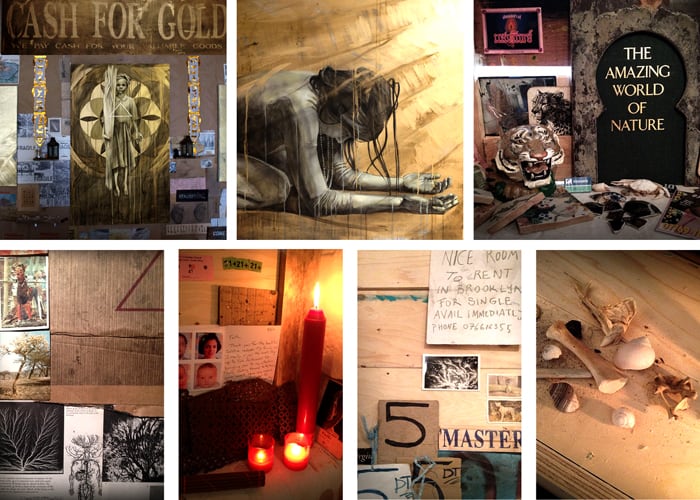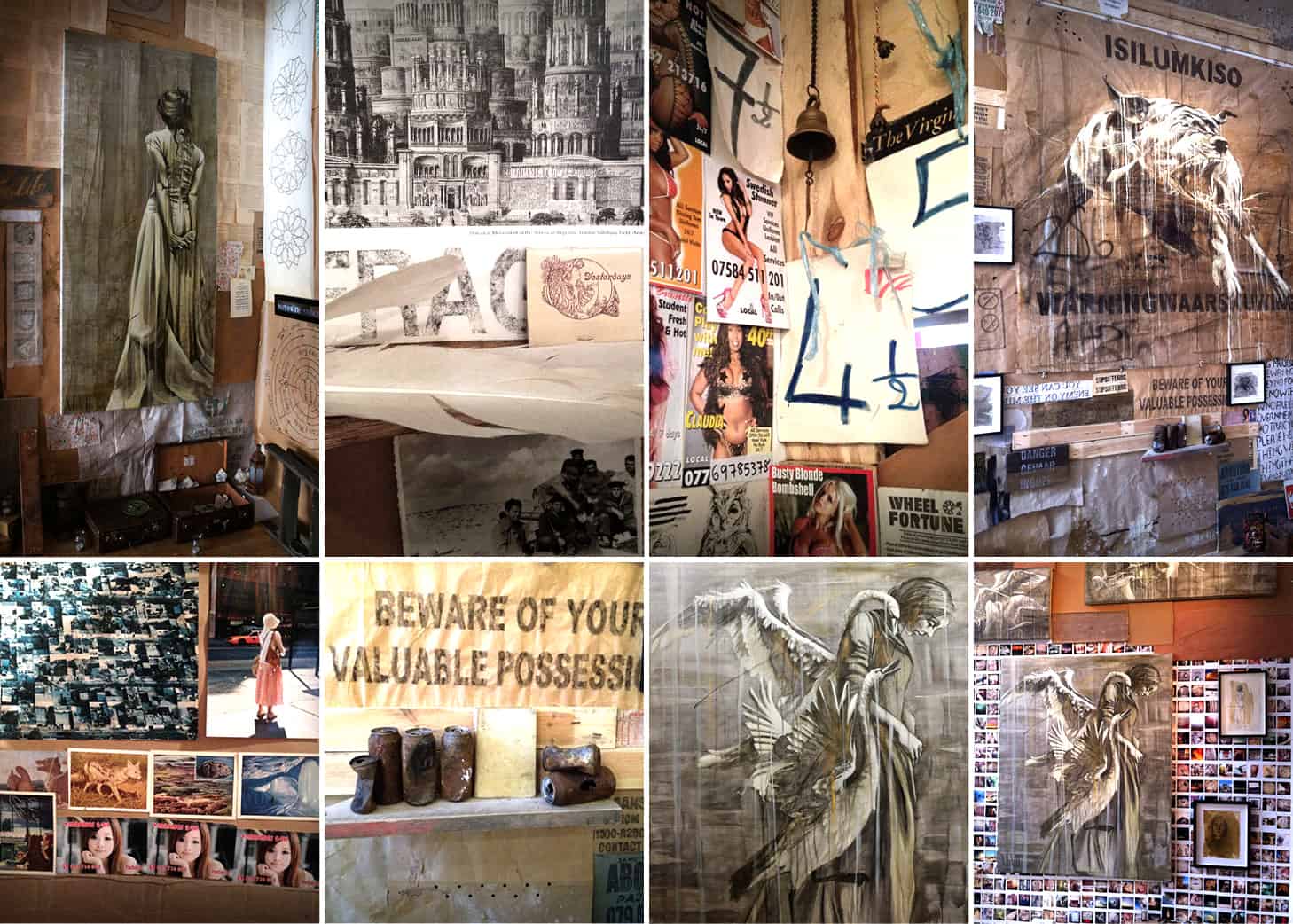Siobhan Keam, ARTsouthAFRICA’s international correspondent, speaks to Faith47 about Aqua Regalia, her solo exhibition at Moniker Projects in London.

ABOVE: Details from Aqua Regalia. All images courtesy of Moniker Projects.
Siobhan Keam: The exhibition text describes the name of the exhibition, ‘Aqua Regalia’ as “the alchemical name for a highly corrosive mixture of nitric and hydrochloric acid that transmogrifies, dissolves and changes the most powerful substance – gold.” Can you give us some insight into how you put it together?
F47: This was my second solo exhibition outside of South Africa, but my first solo exhibition in London. I’ve been working on the project for 2 years. The show in London is the first chapter of ‘Aqua Regalia’; I will be building on the installation over the next 4 years. In 2015 ‘Aqua Regalia’ travels to Rome, and the following year to the USA. Each year the installation grows and refines itself, while the artworks within the installation are newly created for each show.
SK: I was particularly drawn to all of the small details, the replicated pamphlets, beggar’s placards and street posters. Are these pieces works in themselves, or are they simply context for the larger works? Many of them seem recognisably South African − are they evidence of the different objects and printed matter you encounter when making work in public space?
F47: The found objects are items that I have come across on my travels, discarded and unwanted objects that have an inherent symbolic value. So far they are from Madagascar, South Africa, America, Europe, England, Puerto Rico, Hawaii, Scotland, China, Nepal, Thailand and Canada. Eventually, a selection of these will become a permanent installation. The objects, when juxtaposed together, create a powerful iconography, unique unto itself; so you could say that the found objects become an artwork in and of themselves, but they also act as a context for the paintings.

ABOVE: Details from Aqua Regalia. All images courtesy of Moniker Projects.
SK: I found myself recognising many of your larger street art works in the paintings, drawings and prints on show. Did these studies or drawings lead to the creation of the public pieces, or did you later recreate those pieces you had already done outdoors in drawings and prints?
F47: The sketches are preliminary sketches. I often paint the image on canvas, as well as on a wall; it depends how I am interacting with the image, and if the wall/canvas is calling for that specific image.
SK: Your exhibition definitely worked against the typical white-cube aesthetic of many galleries, with its shrine-like installations and floor to ceiling artworks. Was this a conscious decision to move away from the way artworks are typically portrayed in a gallery setting? How do you think the reception of the work changes when it is presented in a gallery rather than outdoors?
F47: I was interested in creating an immersive space where one can get lost in the details and textures of the room. I would like for people to spend time in the space, to have a deep emotional response to the exhibition. I aim to trigger memories, or hidden thoughts and feelings within the viewer. I’m interested in creating a space that has a sacred feeling to it – our lives are so wrapped in our busy schedules that we hardly take the time to sit quietly, to feel or to reflect.



